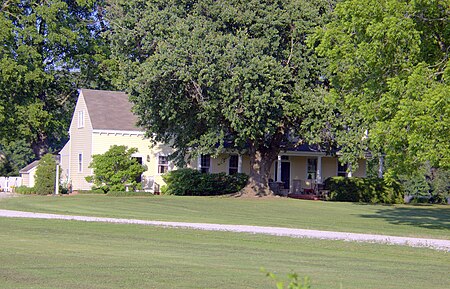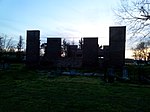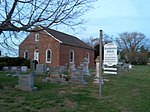Jeptha Hayman House
Greek Revival houses in MarylandHouses completed in 1836Houses in Somerset County, MarylandHouses on the National Register of Historic Places in MarylandKingston, Maryland ... and 2 more
National Register of Historic Places in Somerset County, MarylandSomerset County, Maryland Registered Historic Place stubs

The Jeptha Hayman House, also known as Hayman Farm, is a historic home in Kingston, Somerset County, Maryland, United States. It is a two-story, five-bay weatherboard frame dwelling in the Greek Revival style. The oldest portion is dated by an inscribed brick to 1836, with an addition from about 1850. It features a Tuscan-columned porch supported on a rusticated concrete block knee wall.The house was listed on the National Register of Historic Places in 1990.
Excerpt from the Wikipedia article Jeptha Hayman House (License: CC BY-SA 3.0, Authors, Images).Jeptha Hayman House
Old Westover Marion Road,
Geographical coordinates (GPS) Address Nearby Places Show on map
Geographical coordinates (GPS)
| Latitude | Longitude |
|---|---|
| N 38.068888888889 ° | E -75.707222222222 ° |
Address
Old Westover Marion Road 6829
21871
Maryland, United States
Open on Google Maps




